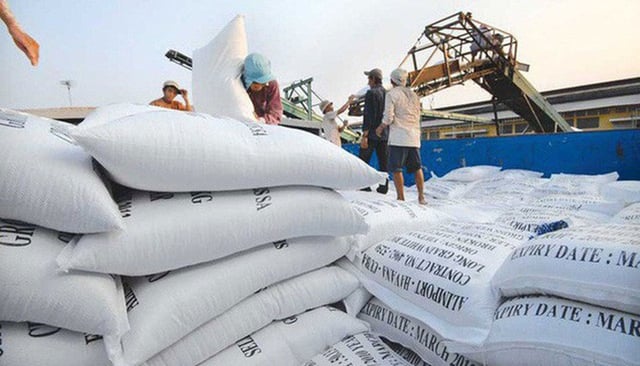November 27, 2025 | 20:56 GMT +7
November 27, 2025 | 20:56 GMT +7
Hotline: 0913.378.918
November 27, 2025 | 20:56 GMT +7
Hotline: 0913.378.918

The main markets for rice exports in the first quarter of 2024 are the Philippines, Indonesia and the Philippines.
The Agency of Foreign Trade (MOIT) said that to ensure national food security and promote sustainable rice production and export, the MOIT will soon issue a Decree amending and supplementing the Decree. No. 107/2018/ND-CP of the Government.
Regarding export support, the Ministry continues to implement trade activities, promote products, and promote the Vietnamese Rice brand, as well as trade promotion activities, to exploit the advantages of free trade agreements effectively (FTA) aims to diversify, dominate new, potential markets, and improve competitiveness for Vietnam's rice industry.
Direct the system of Vietnamese Trade Offices abroad, trade promotion offices, and Vietnamese product introduction centers to support rice exporters in establishing direct distribution channels; Deploy activities to promote Vietnamese rice, exceptionally high-quality rice with high added value to penetrate demanding and niche markets.
In addition, update policies and moves of rice producing and exporting countries; Timely inform ministries, branches, Vietnam Food Association, and rice export traders to regulate production and business activities and ensure efficiency proactively.
Guide the Vietnam Food Association and rice export traders to improve their capacity to negotiate, sign, and implement export contracts, update the rice export situation, and support traders in handling problems in case of necessity.
Regarding balancing supply and demand, stabilizing prices, and ensuring domestic food security, the MOIT will continue to monitor the market situation closely, proactively direct localities to have plans to prepare supply, ensure supply and demand of rice, promptly meeting people's needs, contributing to stabilizing rice prices in particular and food prices in general, ensuring national food security.
Urge the Vietnam Food Association and rice export traders to earnestly implement the regulations in Decree No. 107/2018/ND-CP, including periodically reporting the amount of rice and rice in stock, signing and implementing rice export contracts; purchasing paddy and rice goods to ensure a balance between export and domestic consumption; and maintaining circulating reserves according to regulations.
Direct the market management force to strengthen coordination with local authorities to closely monitor, inspect, and supervise the circulation and consumption of rice in the area and maintain the expected level. Minimum storage of rice export traders according to regulations; Strictly handle cases of speculation and illegal profiteering, causing instability in the domestic market.
Translated by Huong Giang

(VAN) After the institutional merger, Da Nang possesses significant forest-carbon reserves and is proactively engaging in the carbon market, creating a new revenue stream.

(VAN) An Giang strengthens communication against IUU fishing, increases inspections and sanctions, and is determined to remove the EC’s “yellow card” while developing a sustainable fisheries sector.

(VAN) As green transition becomes a global trajectory, Viet Nam’s biggest challenge is not only technology and models, but how to ensure that capital flows reach the right beneficiaries.

(VAN) The Ministry of Agriculture and Environment must spearhead the construction of green governance, spanning decision-making processes and investment standards to policy evaluation mechanisms.

(VAN) The Agriculture and Environment sector of Khanh Hoa has achieved numerous milestones over the past 80 years, contributing significantly to the goal of establishing the province as a centrally governed city by 2030.

(VAN) Viet Nam is entering the pivotal period of 2025-2030, moving toward the formulation of the Remote Sensing Law, which will establish a legal foundation for the development of national digital data.

(VAN) The agricultural sector is finalizing the strategic framework for emission reduction, setting the goal of sharply cutting methane and 403.7 million tons of CO2 equivalent and moving toward Net Zero by 2050.